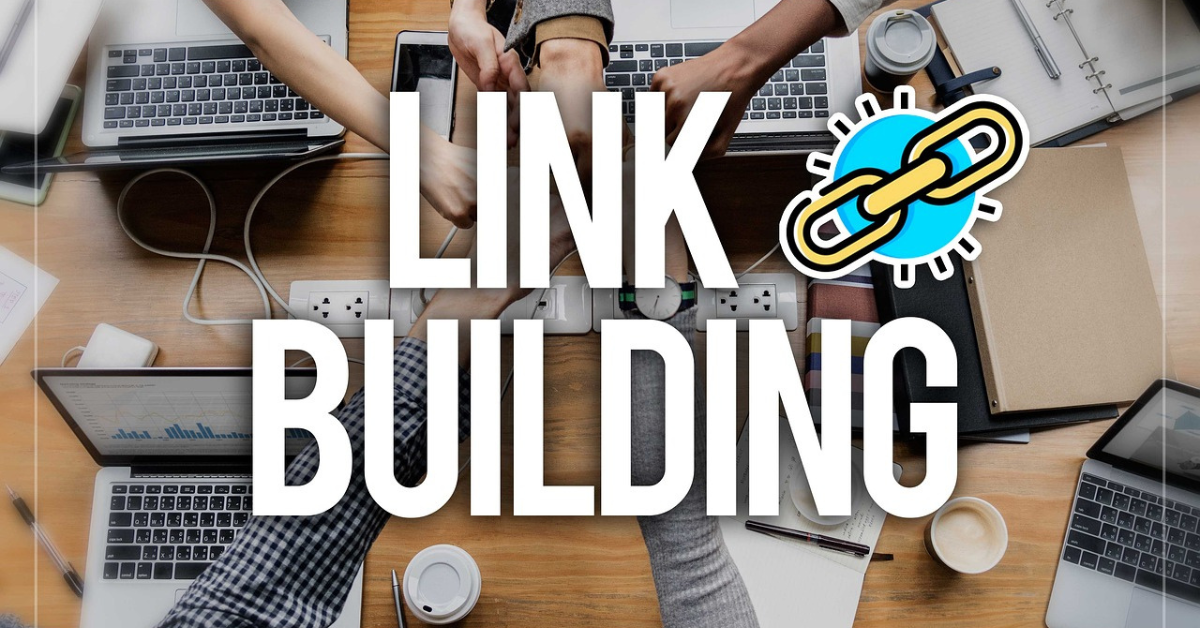In the world of SaaS, writing good copy is the key to connecting your product with users.
In fact, studies show that
This guide is all about SaaS copywriting, with 15 easy tips for 2025.
We’ll cover making catchy headlines and using words that persuade, all while making it clear and simple for you.
Also, we’ll be covering various examples of different copy to help you better understand what we’re talking about.
Let’s check out some tricks that make sense and actually work. Ready to level up your SaaS copy?
Let’s not waste any time and get right into it.
19 Effective SaaS Copywriting Tips & Strategies
In the following sections, we’ll be covering the 15 most effective SaaS copywriting tips & strategies for 2025.
From creating eye-catching headlines to referencing customer testimonials, we’ll cover everything you need to know to write stunning copy.
Here they are:
1. Create Eye-Catching Headlines
Creating catchy headlines is a game-changer in SaaS copywriting. Your headline is like the first impression that can grab your audience’s attention.
So, what makes a headline stand out?
- Clarity: Make sure it’s clear and easy to understand.
- Curiosity: Make it interesting, maybe by asking a question or hinting at a solution.
- Relevance: Connect the headline directly to what your audience needs.
- Conciseness: Keep it short and snappy for a quick read.
Now, let’s go a bit deeper.
Imagine you’re introducing a project management tool, and your headline says, “Boost Your Team’s Work with Our New Project Tool.”

It’s clear, interesting, speaks to a common need, and it’s short. Creating headlines like this makes sure your SaaS copy catches attention right away.
2. Say More in Less Words
In the world of SaaS copywriting, the classic saying “say more in less words” holds significant weight. It’s about delivering your message with impact, capturing attention without overwhelming your audience.
Pro Tip:
Entice your audience by teasing intriguing aspects without revealing everything. A dash of mystery in your SaaS copy creates curiosity, prompting users to explore further and uncover the valuable insights your product offers.
Short and sweet sentences or phrases not only make your content easier to digest but also cater to the limited attention span of online readers.
In an era where time is of the essence, concise copy ensures that your audience receives the essence of your message swiftly.
Whether it’s a product description, email campaign, or website content, the art of saying more with fewer words is a powerful strategy to engage and retain your audience’s interest.
Remember, in the realm of SaaS, brevity is not just a virtue; it’s a necessity.
3. Understand the Product and Industry
To write effective SaaS copy, it’s essential to have a deep understanding of both the product and the industry it operates in.
It’s just common knowledge.
This means understanding:
- Product Features: Familiarize yourself with the ins and outs of the SaaS product. Understand its features, functionalities, and unique selling points.
- Target Audience: Get to know the audience that the product caters to. Understand their pain points, needs, and preferences to tailor your copy effectively.
- Industry Trends: Stay informed about the latest trends and developments in the SaaS industry. Knowing the competitive landscape and industry jargon helps you speak the language of your audience and stay relevant in your messaging.
For this example we’ll look a HubSpot’s marketing software:
In this case, you would need to know well about HubSpot’s pricing plans and features. On top of that it you should study their target customer.
This deep understanding basically forms the foundation for high-quality SaaS copy, enabling you to communicate the value of the product in a way that truly connects with your audience.
4. Reference Customer Testimonials
When it comes to almost any type of copywriting including SaaS, using customer testimonials is a smart move.
Sharing real stories from happy customers adds trust and authenticity to your message.
When people see others benefiting from your product, it builds confidence and makes your SaaS solution more appealing.
Whether it’s success stories or positive feedback, including customer testimonials in your copy is a simple yet powerful way to connect with your audience and boost your brand’s credibility.
5. It’s All About the Call to Action
In the realm of SaaS copywriting, the Call to Action (CTA) serves as the guiding force, steering your audience toward the next steps.
Let’s break down the difference between a great CTA and one that might miss the mark:
Great CTA:
- Clear and Direct: A good CTA leaves no room for confusion. It tells the user exactly what to do without any ambiguity.
- Compelling Language: It uses persuasive and action-oriented words, creating a sense of urgency or excitement.
- Visible and Accessible: A good CTA stands out visually on the page, making it easy for users to spot. It’s strategically placed where users naturally look.
- Relevant to Content: It aligns seamlessly with the content, ensuring a logical flow that doesn’t feel forced.
Low-Quality CTA:
- Vague Language: A weak CTA might lack clarity, leaving users unsure about the next steps.
- Bland or Passive Language: It fails to incite action due to generic or uninspiring language.
- Poor Visibility: A bad CTA can get lost in the design, making it hard for users to notice.
- Disconnected from Content: It feels out of place or disconnected from the overall message, causing a disjointed user experience.
Remember, a powerful CTA is like a guide leading your users toward the desired action with clarity, persuasion, and relevance.
6. Speak Your Audience’s Language
In the SaaS game, it’s all about talking like your crowd. Take a moment to understand who they are, what they’re looking for, and how they express themselves.
Keep it straightforward, there is no need for fancy words. Let’s say your SaaS is tailored for small businesses – focus on how it streamlines their day-to-day tasks without diving into technicalities.
When you use language that clicks with them, your SaaS message lands better and connects more.
7. Emphasise Benefits the Right Way
When it comes to SaaS copy, showcasing the benefits is a must, but how you do it makes all the difference.
It’s not just about listing features, it’s about painting a picture of how your SaaS solution can genuinely enhance users’ lives.
Instead of floating in the clouds of hyperbole, ground your benefits in realism.
Realistic Emphasis:
- Practical Scenarios: Describe how your SaaS product addresses real-life challenges. Whether it’s streamlining processes or saving time, connect benefits to tangible improvements.
- User-Centric Language: Speak directly to your audience using language they understand. Instead of lofty promises, focus on how your SaaS makes their workdays smoother or their tasks more manageable.
- Avoiding Exaggeration: While emphasizing benefits, steer clear of over-the-top claims. Realism fosters trust, so be genuine about what your SaaS can achieve.
Paint a picture of the practical advantages your product brings, and let realism be your guide in showcasing its true value.
8. Reference Customer Testimonials
Unlocking the potential of your SaaS journey is a lot like having a trusted friend recommend a great book.
Consider this:
Sarah, a small business owner, shares how your project management tool transformed her chaotic workflow. Her testimonial, highlighting increased efficiency and reduced stress, becomes a beacon for others navigating similar challenges.
It’s not just about your SaaS, it’s about the real impact it makes on users, like Sarah.
By using testimonials like this one, you’re not merely selling a product – you’re sharing genuine stories of success, creating a community of advocates who amplify the authenticity of your SaaS offering.
9. Talk Numbers
This one’s a huge one for writing good copy.
Talking numbers increases your credibility and helps your viewers better understand what you’re talking about.
For example, when you’re talking about your SaaS product, use numbers to show how it really helps. Instead of just saying it’s good, say things like “saves 20 hours a week” or “increases profits by 30%.” Use simple stats that make a big impact.
Compare these numbers to what others in your industry are doing or how things were before your SaaS came along. Keep it clear and easy to understand. Numbers help your audience see the real benefits of your SaaS in a way that’s hard to ignore.
10. Trigger Emotions and Pain Points
In the world of SaaS copywriting, tapping into emotions and addressing pain points is a great strategy to engage your audience.
Here’s how to effectively trigger emotions and pain points:
- Empathy: Understand your audience’s challenges and feelings. Use language that shows you “get” what they’re going through.
- Storytelling: Share relatable stories that evoke emotions. Highlight real situations where your SaaS solution provides solutions to common pain points.
- Highlight Benefits to Alleviate Pain: Clearly connect your SaaS benefits to addressing specific pain points. Show how your product can make their lives easier or solve a problem they often face.
- Use Evocative Language: Choose words that evoke emotions. Whether it’s frustration, relief, or excitement, your language should resonate emotionally.
By triggering emotions and addressing pain points, you not only make your SaaS copy more memorable but also create a connection with your audience.
When users feel that your product understands and addresses their needs on a deeper level, it becomes more than just a solution – it becomes a valuable ally in overcoming challenges.
11. Survey Customers
In the SaaS world, talking to your customers through surveys is a smart and popular move.
Here’s an example from Zapier:
It’s like checking in with them to see how things are going. When you ask for their thoughts, it shows you care about making things better.
Getting their feedback helps you understand what’s working and what could be improved.
It’s not just about gathering information; it’s about keeping the conversation going and making sure your SaaS stays on the right track to meet your users’ needs.
12. Keep a Consistent Tone of Voice
Maintaining a consistent tone of voice in the SaaS world is like staying true to a good groove – it keeps things familiar and resonates with your audience. Here’s how to keep that rhythm:
- Know Your Vibe: Figure out the personality you want for your SaaS brand. Whether it’s a chill and friendly vibe or a more formal tone, stick with it.
- Choose Your Words: Keep a set of words and phrases that match your chosen tone. Consistency in language makes your writing feel like it’s all coming from the same place.
- Adapt to Your Crowd: Tailor your tone to your audience. If they dig a laid-back style, roll with it. If they prefer a pro touch, keep it polished.
Maintaining a consistent tone of voice lets your SaaS copy groove along with your brand, creating a recognizable and trustworthy connection with your audience.
13. Paint a Picture
No, this doesn’t mean literally painting a picture for your customer.
It means using words to create a clear image in your audience’s minds. Imagine a small business owner effortlessly managing tasks with your project management tool, bringing order to their daily operations.
By connecting emotionally and showcasing practical benefits, you make your SaaS solution more memorable and show how it adds real value.
14. Use Time Pressure
In the world of SaaS, adding a dash of time pressure to your message can be a game-changer. It’s like giving your audience a friendly nudge, encouraging them to take action sooner rather than later. Here’s how to do it:
- Limited-Time Offers: Introduce time-limited promotions or discounts. For instance, “Sign up in the next 48 hours for an exclusive deal.”
- Countdowns: Use countdowns to create a sense of urgency. “Only two days left to grab this special offer!”
- Highlighting Updates: If you’re rolling out new features or improvements, emphasize that they’re available for a limited time. “Upgrade now to access our latest features before they’re gone!”
By infusing time pressure into your SaaS copy, you prompt your audience to make decisions promptly, adding a dynamic element that can boost engagement and conversions.
15. Make Sure it’s Scannable
When it comes to creating SaaS copy, ensuring your content is easily scannable is like offering your audience a streamlined path through your message, making it accessible and engaging. Here’s how to make it happen:
- Headings and Subheadings: Break down your content with clear headings and subheadings. This not only organizes your information but also helps readers quickly locate what they’re interested in.
- Bullet Points and Lists: Present information in easy-to-digest bullet points or lists. It provides a visual structure that guides the eyes seamlessly through key details.
- Short Paragraphs: Keep paragraphs concise and to the point. Short chunks of text are easier to scan than lengthy paragraphs, ensuring that your audience can quickly absorb essential information.
- Bold and Italics: Emphasize critical points using bold or italics. This not only adds visual interest but also draws attention to key elements, directing readers to the most important aspects of your message.
By incorporating these elements, you make your SaaS copy user-friendly and scannable, catering to readers who might be in a hurry or prefer a quick overview before diving deeper into the details.
What is Saas Copywriting?
SaaS copywriting, short for Software as a Service copywriting, is the strategic use of written content to market and communicate the value of SaaS products.
SaaS involves delivering software applications over the internet, eliminating the need for users to download, install, or maintain the software locally.
Copywriting in this context focuses on creating compelling and persuasive written material, such as website content, emails, landing pages, and advertisements, to effectively convey the features, benefits, and unique selling points of SaaS solutions.
It’s about crafting messages that resonate with the target audience, addressing their pain points, and ultimately driving user engagement and conversions.
Basically, SaaS copywriting plays a pivotal role in translating technical details into user-friendly language, making SaaS products accessible and appealing to a broad audience.
Why is SaaS Copywriting Important?
Copywriting is essential for all types of businesses, especially SaaS companies.
Every form of written marketing is a type of copy.
Here are some benefits for copywriting for SaaS companies:
Communicating Value
SaaS copywriting serves as a powerful tool to articulate the unique value proposition of a product. It effectively communicates how the SaaS solution addresses specific pain points and provides tangible benefits to users.
Conversion Optimization
Effective copywriting plays a pivotal role in optimizing conversions. Clear calls to action, persuasive messaging, and compelling content contribute to turning visitors into users, and users into customers.
Building Trust
Trust is a key factor in SaaS adoption. SaaS copy that is transparent, authentic, and addresses users’ concerns helps build trust, making potential customers more likely to commit to the product.
Simplifying Technical Details
SaaS products often involve technical complexities. Copywriting simplifies these details, translating technical jargon into user-friendly language that resonates with a broader audience.
Establishing Brand Identity
Copywriting plays a vital role in establishing and reinforcing the brand identity of a SaaS product. Consistent messaging, tone, and language contribute to a cohesive and recognizable brand image.
Different Types of Saas Copy (With Templates)
There’s several different types of SaaS copy and identifying them is crucial.
Here are the main types to pay attention to:
1. Landing Page Copy
Example from: Tier
The landing page serves as the digital storefront for your SaaS product, and the copy is your virtual sales pitch. Here, you welcome visitors and present the unique selling points of your product. It’s not just about features; it’s about creating an immersive experience.
Use language that resonates with your target audience, addressing their pain points and showcasing how your SaaS solution is the answer they’ve been looking for. Encourage them to take the next step, whether it’s signing up for a trial, exploring a demo, or learning more about what sets your product apart.
2. Email Campaign Copy
Example from: Grammarly
Email campaigns are a direct line to your audience’s inbox, offering a personalized space to communicate with potential users. Craft your email copy thoughtfully, focusing on building a connection.
Address specific pain points your audience may be facing, introduce your SaaS product as a solution, and guide them toward a clear call to action. Use the email as a conversation starter, providing valuable insights, and creating a sense of urgency or curiosity that prompts engagement.
3. Social Media Posts
Social media platforms are dynamic spaces where brevity meets impact. Use your social media copy to share exciting updates, achievements, or relevant content about your SaaS product. Craft concise yet compelling messages that leverage hashtags and visuals to grab attention.
Tailor your tone to match the platform – whether it’s the professionalism of LinkedIn or the casual vibe of Twitter. Foster engagement by encouraging comments, shares, and clicks to learn more.
4. Testimonials and Case Studies
Example from: Kissmetrics
Real stories resonate with potential users. Testimonials and case studies humanize your SaaS product, showcasing its real-world impact. When crafting copy for testimonials, highlight specific benefits or transformative experiences your customers have had.
Let their words speak volumes about the effectiveness of your product. Case studies provide a deeper dive, detailing challenges, solutions, and outcomes. This type of copy is about building trust through authentic narratives.
5. Webinar or Event Promotion
Promoting webinars or events related to your SaaS niche requires copy that sparks interest and communicates value. Clearly articulate what participants will gain – whether it’s insights from industry experts, practical tips, or a first look at upcoming features.
Use persuasive language to create a sense of exclusivity and importance. Your copy should not only invite but also excite, prompting users to register and actively participate.
Common SaaS Copywriting Mistakes
Here are some common SaaS copywriting mistakes that you might just be doing:
1. Jargon Overload
One common mistake is inundating SaaS copy with technical jargon. While it’s essential to communicate the functionality of the product, excessive use of industry-specific terms can alienate a broader audience. Opt for clear and concise language that is accessible to users with varying levels of technical expertise.
2. Feature-Focused Copy
Focusing solely on listing features without addressing the underlying benefits is a common pitfall. Users are more interested in understanding how your SaaS product solves their problems or improves their processes. Shift the narrative from features to tangible outcomes and advantages to create a more compelling message.
3. Lack of Clarity in Calls to Action (CTAs)
Ambiguous or generic calls to action can hinder user engagement. Whether it’s signing up for a trial, downloading a resource, or making a purchase, ensure that your CTAs are clear, specific, and aligned with the user’s journey. Guide users seamlessly through the desired actions to enhance conversions.
4. Neglecting the Emotional Connection
SaaS copy often falls into the trap of being too technical and detached. Neglecting the emotional aspect can result in a lack of resonance with the audience. To forge a deeper connection, infuse your copy with relatable scenarios, user stories, and language that taps into the emotions associated with solving real-world challenges.
Conclusion
That’s it for the 15 SaaS copywriting tips!
Thanks’ for making to the end.
In the realm of SaaS copywriting, precision is paramount. Striking a balance between technical accuracy and user-friendly language, emphasizing benefits over features, and crafting clear calls to action are crucial for impactful communication.
By avoiding common mistakes and connecting with your audience on both intellectual and emotional levels, your SaaS copy can truly shine, driving engagement and conversions.
Aslo, let me know in the comments which of these strategies you will be implementing.
Thanks again for making it the end and goodluck with your SaaS copy!





